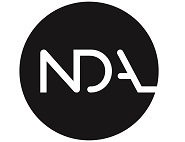NDA Corporate Centre: gender pay gap report, 2017
Published 21 March 2018
1. Introduction
New government policy requires organisations with over 250 people to publish their gender pay gaps. Despite us being below this threshold, being open and transparent in reporting our figures is extremely important to me. This is why I have taken the decision to publish the Corporate Centre figures along with those for all of our businesses, regardless of how many people they employ.
Being completely open about these figures, however stark they may be, helps shine a light on the areas where we need to improve. Across the whole of the NDA Group we have varying degrees of gender pay gaps that range from 12% for Dounreay to 40% within the NDA Corporate Centre.
The gaps are due to a number of factors, including the uneven distribution of men and women across the pay grades, with a far greater proportion of men in the higher grades. The causes of this are broad and find some of their roots in the complex history of our industry.
Since I took over as Chief Executive one year ago, we have launched a suite of change activities to take the whole of the NDA Group forward towards becoming more inclusive and diverse, and a better place to work. Addressing the gender pay gap is a key part of this work.
David Peattie,
NDA Chief Executive
2. What is the difference between the gender pay gap and equal pay?
2.1 Gender pay gap
This report deals with the gender pay gap. This is the difference between the hourly rate of pay of male employees and female employees, expressed as a percentage of the hourly rate of the male employees. The gender pay gap is reported on both a mean (average) and median (mid-point on a distribution) basis.
2.2 Equal pay
UK law has, since the 1970s, prohibited paying different amounts to men and women who are doing ‘like work’, ‘work of equal value’ or ‘work rated as equivalent’ unless there is ‘genuine material factor’ for the difference. This is not the same as a gender pay gap.
3. The NDA gender pay gap
214 total NDA employees
91 female NDA employees
123 male NDA employees
The overall gender pay gap for the NDA, when comparing mean pay, is 40.7%. This is more than double the national average of 17.4%. The median pay gap is 38.5% compared to the national average of 18.4%.
40.7% NDA mean gender pay gap
17.4% mean gender pay gap in the UK (Office of National Statistics 2017)
38.5% NDA median gender pay gap
18.4% median gender pay gap in the UK (Office of National Statistics 2017)
3.1 Gender breakdown per quartile
| Quartile | Female % | Male % |
|---|---|---|
| Lower quartile | 84.9% | 15.1% |
| Lower middle quartile | 43.4% | 56.6% |
| Upper middle quartile | 15.1% | 84.9% |
| Upper quartile | 24.5% | 75.5% |
4. Explaining the NDA’s gender pay gap
4.1 Distribution of males and females across pay bands
There are 12 salary levels within the NDA and 66 females (73%) are in the lower half of pay bands compared to 31 men (25%).
The reasons behind this are:
- under-representation of women in the Executive [footnote 1] (8 men and 1 woman)
- under-representation of women in other senior roles
- over-representation of women in junior roles
4.2 Distribution of bonuses across males and females
The under-representation of women in senior roles and over-representation in junior ones are also reflected in the gender bonus pay gap.
The mean bonus gap of 50% and the median bonus gap 54.2%. Bonus levels are weighted against responsibility and therefore seniority within the NDA. The low distribution of females in the most senior roles has a significant impact on the bonus gap.
In line with reporting requirements, our mean bonus gap is based on actual bonuses and does not take account of part-time working. When calculated on a full-time equivalent basis, our mean bonus gap is reduced to 41.7% and our median bonus gap to 43.4%.
5. Addressing the gender pay gap
The NDA is working hard to address issues around diversity and inclusion. It’s not only a moral duty, but a business priority. Organisations that benefit from diversity in background and viewpoints attract and retain the best people and are ultimately more successful.
Ensuring a more balanced distribution of males and females at all levels will be good for our business and is needed to address the gender pay gap. Change won’t happen overnight, but we are taking steps to close this gap.
This will see us:
- recruit people differently
- review our approach to reward and development
- promote flexible working practices
- take best practice from other industries
- re-examine our approach to attracting women into the industry
-
NDA Executive salaries are set to reflect leadership and governance of the whole civil nuclear group and are significant for an organisation of our size. This has a greater impact on the mean hourly rate and bonus calculations. ↩

